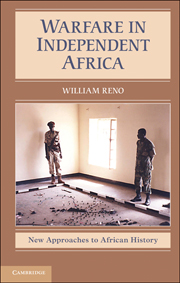4 - Reform Rebels
Published online by Cambridge University Press: 05 June 2012
Summary
By the late 1970s a new type of rebel struggled against despotism and repression – reform rebels. Their targets were indigenous African rulers such as Uganda's Idi Amin (1971–79) and Ethiopia's Mengistu Haile-Mariam (1975–91). Leaders of these new rebels promised to fight against repressive African governments to bring about a “second liberation” to implement new ideas of governance in areas that they controlled. They adapted the anti-colonial rhetoric of national emancipation and a new societal order. Like anti-colonial and majority rule rebels, reform rebels accepted existing borders. Even Eritreans who fought to create a separate country argued that Eritrea's status as a former Italian colony (1896–1941) and its 1950 UN-sponsored federation with Ethiopia entitled it to separate statehood, and that Eritrea's independence was just the last stage of decolonization.
These rebels faced a difficult environment in which their appearances seemed to be at odds with the idea in this book that rebel behavior and organization reflect the broader political context in which they fight. Yoweri Museveni's National Resistance Movement (NRM), the Eritrean People's Liberation Front (EPLF) and Tigray People's Liberation Front (TPLF) in Ethiopia, and the Rwandan Patriotic Front (RPF) lacked the international support that their anti-colonial and majority rule counterparts enjoyed. Those rebels could reasonably count on support from the OAU Liberation Committee and the UN Decolonization Committee, provided that they could convince outsiders of their capacity to fight alien rule.
- Type
- Chapter
- Information
- Warfare in Independent Africa , pp. 119 - 162Publisher: Cambridge University PressPrint publication year: 2011

